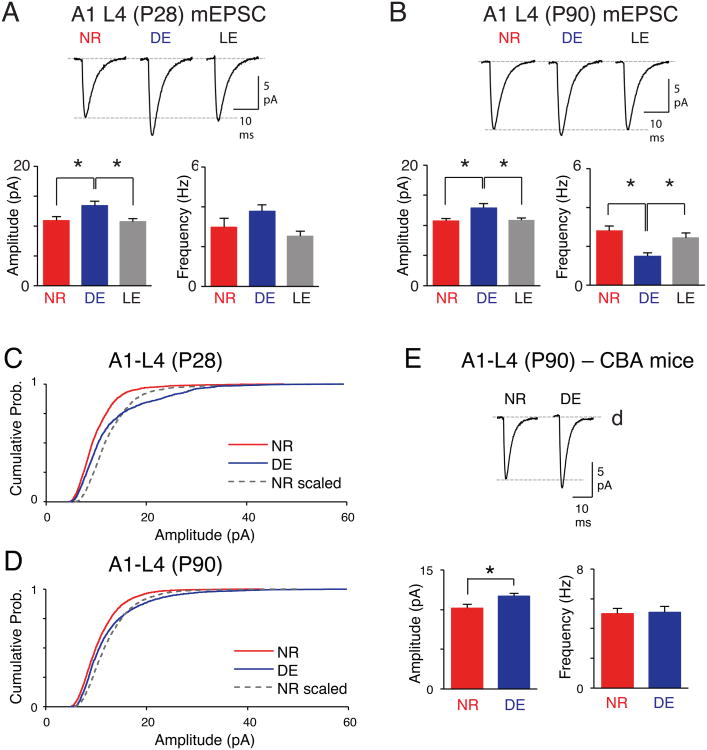Figure 4.
Cross-modal potentiation of A1 L4 mEPSCs is age-independent and non-multiplicative. (A) Results from juvenile (P28) mice. DE increases the average mEPSC amplitude of A1-L4, which reverses with LE (bottom left). Top: Average mEPSC traces. Bottom right: Average mEPSC frequency. (B) Results from adult (P90) mice. In A1-L4, DE increases the mEPSC amplitude, which reverses with LE (B, bottom left). Top: Average mEPSC traces. Bottom right: Average mEPSC frequency. *P <0.05, ANOVA. See Table S2 for data. (C) DE induces a non-multiplicative increase in mEPSC amplitude of A1-L4 in young mice. The amplitudes of NR mEPSCs were multiplied by a scaling factor of 1.27 to match the average mEPSC amplitude to that of DE (Kolmogorov-Smirnov test between DE and NR scaled: P < 0.0001). (D) Non-multiplicative increase in mEPSC amplitude of A1-L4 in P90 mice with 7d-DE. Scaling factor was 1.17 (Kolmogorov-Smirnov test between DE and NR scaled: P < 0.0001). (E) DE increases the average mEPSC amplitude of A1-L4 neurons of CBA mice, which do not undergo age-related hearing loss. Left: Average mEPSC amplitude comparison. Middle: average mEPSC traces. Right: No change in the average mEPSC frequency. *P < 0.02, t-test.

